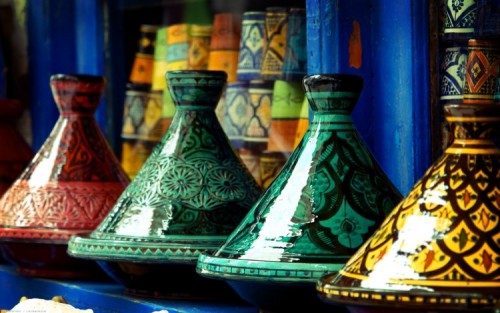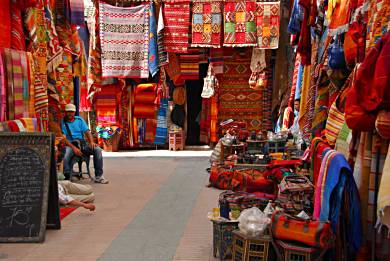Required:
- the shaker: There are some shaker that are made of 3 separate parts, with the middle part holding a fixed filter. Those shakers are not always as waterproof as they should be. Using a professional model like the Boston shaker is advisable. These shakers are made of 2 parts: the cup en a top with a filter aka the strainer. Metal shakers are preferred over the glass types.
- a mixing glass with a long spoon, logically named a bar spoon.
- an ice bucket
- an ice tong
- a fruit press
- a cork screw that includes a small knife which can be used to remove lids.
- a bottle opener
- a fruit knife and plate
Additional tools:
- a siphon with CO2 cartridge to make "fresh" soda water
- a measuring jigger
- a straw holder
- a nutmeg grater
- small plates (for rimming the glasses with salt or sugar)
- a sugar sprinkler
- a very thin & long knife to carve fruit for garnish and side decoration.
- a bottle cap for opened wine of champagne bottles.
- a can opener
- an (electronic) mixer / blender.
The cocktail glasses:
The basic rule is that cocktail glasses should be transparent, colorless and unmarked, so that the beautiful colors of the cocktail get the appreciation they deserve. If so required you can use glasses with a colored foot or markings for exotic and refreshing long drinks.
- Large foot glass
- High Champagne glass
- Cocktail glass
- Big tumbler glass, straight, 30 - 50 cl.
- Small tumbler glass, straight, 15 - 30 cl.
- 'old fashioned' glass, straight and large, like a whiskey glass.
- small foot glass
- balloon glass
- Cognac glass
- Glass with large ear or metal holder for hot drinks
- Beer glass, straight or with a foot.
Types of Cocktails
Cobblers: Very refreshing cocktail, directly prepared in the glass, without a shake and with crushed ice. This low alcohol content drink is accompanied by chopped fruit and served with a straw or a spoon.
Collins: The perfect cocktail for summer. As they are served with lots of ice, sugar, lemon and soda, they are very refreshing. Collins cocktails are made with hard liquor, lemon juice, soda and sugar. Sometimes the schnapps is substituted by vodka, gin, whiskey, rum or tequila.
Coolers: Long and quite pleasant sips cocktail, with low alcohol content, that uses ice cubes instead of crushed ice. Moreover, they tend to be decorated by an spirally cutted orange or lemon peel.
Crustas: Cocktails served in a coup with a sweetened glass, prepared in shakes. The most common example is the Margarita.
Cups: Cocktails prepared with white wine, siders and liquors. They are served with cutted fresh fruit -stored in the freezer for two or three hours- and in big containers, even if they are drunk in small cups.
Egg nogs: Cocktails where the spirit or fermented drink is the basis, accompanied by milk, eggs and nutmeg in the preparation process. It can be served cold or warm.
Fizzes: Sparkling cocktails, with long sips, prepared with lemon juice, sugar and egg white, in combination with gin or any other spirit drink, supplemented with soda.
Flips: Creamy cocktails made with rum, sherry, marsala, sugar and egg yolk. They are usually served warm and accompanied by cinnamon and nutmeg.
Frozen: Half-frozen or ice-cocktails where the beverage has been mixed with a plentiful piece of crushed ice.
Grogs: Warm drink made with hot sugary water, mixed with liquor -usually rum but also with kirsch and cognac- that usually carries aromatizers like lemon.
Juleps: Refreshing drinks recognizable by the mint aroma, mixed in the preparation with Kentucky Bourbon, sugar, and thick crushed ice. Juleps are also prepared with scotch, rum and even brandy.
Pousse-café: Directly prepared in the glass, after pouring the heavier liquids -normally sweeter and thicker- and taking care not to mix them. Its highlight is the fring that each combined liquid have.
Sangría: A wine punch, made with red wine, sugar, chopped fresh fruit -normally pineapple, pears, apples and peaches- and sparkling water
Sours: Cocktails made with lots of lemon and sugar mixed with bourbon or any other whiskey.
Cocktails and design
The execution of a cocktail is important however, the decision about what cocktail is chosen for consumption comes into play beforehand. This can be heavily influenced by how the drink is portrayed before hand. For example, advertisements, menu design and description of the drink itself will either encourage or deter against the decision of what beverage is chosen.
One particular area of interest I have found is menu design. Depending how the menu is displayed, some drinks options may seem more appealing than others. Factors such as illustration, colour, layout all have an effect in aiding the final decision of what beverage will be consumed.
The menu design for 'The Whaling Club' below is a simple design that doesn't create a great difference between cocktails so that the audience isn't bias when choosing a cocktail. There is a stable equilibrium between drinks that is achieved through the use of a strong layout structure and a simplistic colour scheme which reflects the nautical name of the bar. The illustrative approach works well in reflection of this theme and the type selection is simple and to the point.

The 'Canelakes Island' menu has a vintage vibe that particularly reminds me of Hawaii, mostly because of the colour scheme. A washed out pink background with colourful drinks placed over the top creates a clashing effect like what is seen on typical Hawaiian floral shirts. The layout is simple and in block formation however is legible and understandable to the customer. Comparing this design to the previous 'Whaling club' menu, I'd put the target audience at an older age who do not have a great knowledge about cocktails or alcohol as the pictures and information provide everything there is to know about the content, appearance and process of how to make the drink.

1967 cocktail menu, inside page spread -- cocktail menu from South Pacific - Hallandale, FL. This menu is very similar to the last however explores layout differently and gives less information about the drink which works in favor as the page doesn't include too much text so that the customer can focus on the image more so than description. Te plain white background works much better than a coloured background as the illustrations of the drinks stand out from the page.

The photograph below is of a Spanish cocktail menu and keeps with a simple digital illustrative design that is seen more in 'trend' and student bars of who the target audience are young professionals and students. The inclusion of a conversation about the cocktail reflects the stereotyped interest in socializing of the target audience. The simple use of colour works well and doesn't over complicate the page.The white text on black background is effective and creates more of a base to work from rather than being white background and black text.
I particularly like the design below which was found on Behance. The colour scheme is refreshing yet simple and stands out from the white background. The use of photographs with simple digital illustration creates an exiting and contemporary aesthetic.
Baabar have a commonly used style of using colour block layers to depict what amount of alcohol and mixer is included in the cocktail. This info-graphical way of displaying content is easy to understand and doesnt over complicate the appearance of the menu.
| 














![[Cocktail party art]](http://si.wsj.net/public/resources/images/PT-AG582_Drinks_20071005141540.jpg)

















